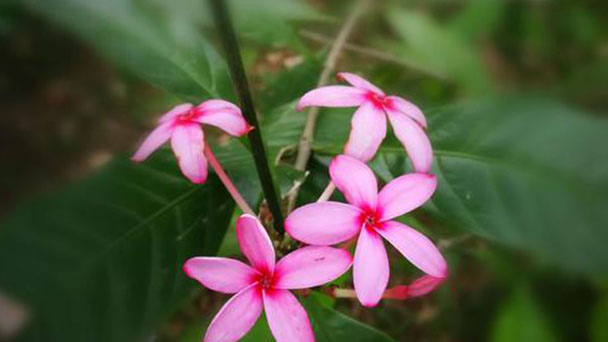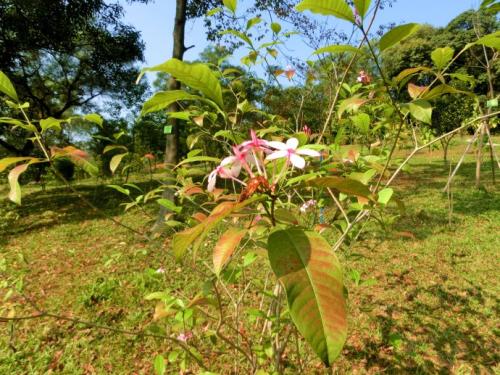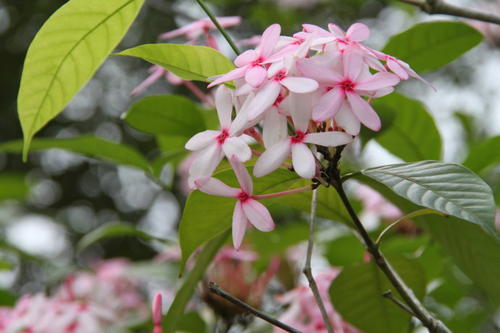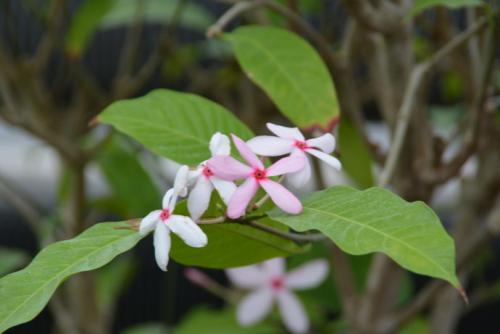Kopsia profile
Written by Maggie
Mar 10 2021

Kopsia is a shrub, up to 3 m tall. Kopsia is cultivated in Guangdong, China. It is found in Indonesia, India, Philippines and Malaysia.
Kopsia is evergreen, simple and elegant, suitable for garden planting, wall planting. Its root bark has the effect of clearing away heat and detoxifying, and is often used in the treatment of upper respiratory tract infection, pharyngitis and other diseases.
Kopsia picture

Morphological characteristics of Kopsia
Shrubs
Kopsia is a shrub, up to 3 m tall.
Leaf
Leaves of Kopsia papery, elliptic or elliptic lanceolate, 10 -- 16 cm long and 2.5 -- 6 cm wide, caudate apically, cuneate basally, glabrous on both surfaces, dark green and glossy above, light green below; Mid Veins and lateral veins flattened on leaf surface, raised on dorsal surface, lateral veins 10-14 on each side, obserously ascending, netted at leaf margin.
Flowers
Kopsia is cyme terminal, puberulent;Pedicels short, ca. 1 cm long, stout; Pedicels are 5 -- 7 mm long; Bracts ca. are 1.5 mm, puberulent on both surfaces; Sepals are ovoid, ca. 1.5 mm, puberulent on both surfaces; Corolla is pink, corolla tube slender, up to 3.8 cm long, throat enlarged, glabrous outside, internal throat pubescent, corolla lobes oblong; Stamens bearing at larynx of corolla, filaments short; Disk of kopsia is liguulate, shorter or as long as ovary, alternate with carpel; Ovary consists of 2 free carpels, tomentose, style slender, stigma clavelike, each carpel with 2 ovules.
Fruit
The drupes of Kopsia are usually single (the other one does not develop); Seeds are usually 1 (the other one is not developed), altar-shaped, 1.3 -- 2.5 cm long, obtruncate, pubescent, seed coat thin, greenish purple.
Ecological habits of Kopsia
Kopsia is distributed in Indonesia, India, the Philippines and Malaysia.
Kopsia is cultivated in Guangdong, China.
The type specimen of Kopsia was collected from Malaysia.

How Kopsia propagates
Cutting propagation
Kopsia is mainly propagated by cuttings, and the soil is sandy loam rich in organic matter.
Kopsia care
Amend the soil by way of including a combination of pinnacle soil (or natural peat moss) and composted cow manure to the gap when you plant.
No trimming is wanted except you want to put off decreased branches.
Water on ordinary groundwork however provides the soil time to dry out between waterings.
Fertilize three instances a 12 months - spring, summer, and autumn - with a precise nice granular fertilizer.
Landscape use of Kopsia
The flowers of Kopsia are large and beautiful, and can be viewed in the garden.

Latest Updated
- Benefits of Bugleweed - 7 Science-backed Health Benefits
- Bugleweed Dangers & Side Effects - Is It Poisonous?
- How to Plant Evergreen Trees - What You Should Know
- When to Plant Evergreens - Grow Guide for Evergreen Trees
- 12 Wonderful Evergreen Shrubs for Your Garden
- 12 Popular Evergreen Plants with Pictures for Beginners
- When And How To Prune A Lilac Bush Like a Pro
- How to Grow & Care for Lilac Vine (Hardenbergia Violacea)
- Japanese Lilac Tree (Syringa Reticulata) Care & Propagation Guide
- Shumard Oak Pros and Cons - What to Know
Popular Articles
- Winter maintenance of Antirrhinum Majus
- How to Grow Terminalia Mantaly Tree
- How to Grow and Care for Crossostephium Chinense
- How to grow Antirrhinum Majus in spring
- Peristeria Elata (Dove Orchid) Profile: Info & Care Guide
- Underwatered Snake Plant (Sansevieria Trifasciata) - Signs And How To Fix
- How to Care for Brazilian Jasmine Plant (Mandevilla Sanderi)
- How to Grow & Care for Graptopetalum Purple Delight in Summer
- Rosa Chinensis (China Rose): Plant Growing & Care Tips
- How to Care for Baby Sun Rose (Aptenia Cordifolia)